We can start with the identity sin 2 (x)cos 2 (x)=1 If we divide through the equation by cos 2 (x), we get sin 2 (x)/cos 2 (x) cos 2 (x)/cos 2 (x) = 1/cos 2 (x) If we look at the left hand side of the equation sin 2 (x)/cos 2 (x) is equal to tan 2 (x), and cos 2 (x)/cos 2 (x) is equal to 1 (as it is divided through by itself), the left hand side becomes tan 2 (x) 1 Now if we look at theClick here👆to get an answer to your question ️ Show that tan^4theta tan^2theta = sec^4theta sec^2thetaProve that 1 tan^2 x = sec^2 x We know that tan x = sin x/cos x and so tan 2 x = sin 2 x/cos 2 x We also know that sin 2 x cos 2 x = 1 because this is a Pythagorean identity We can rewrite the left hand side as (cos 2 x sin 2 x)/cos 2 x because 1 can be rewritten as cos 2 x/cos 2 x

Evaluate Int Sec 2xtanx Sec 2x Tan 2x Dx
5.25064634
5.25064634-Hence, testing if the `tan^2 x 1= sec^2 x` holds yields that it is a valid statement Approved by eNotes Editorial Team We'll help your grades soar Start your 48hour free trial and unlock24/04/09 · Starting with just the left side sin^2xcos^2xtan^2x pythagorean identity sin^2xcos^2x=1 so 1tan^2x pythagorean identity 1 tan^2x= sec^2x The left side = sec^x2 and so does the right



Answered O 1 Sec 2 2sec Z 40se X 2 Bartleby
An expansion of Pythagoras' Identity18/05/10 · Since tan^2(x) 1 = sec^2(x) is an equation derived from sin^2 x cos^2 x = 1 (divide everything by cos^2 x), and since from that equation you can find that tan(x) = square root of (sec^2(x) 1), that means d/dx of tan(x) = d/dx of squareroot of (sec^2(x) 1) = (1/2)(sec^2(x) 1)^(1/2) times d/dx of (cos^2(x) 1) or you can take the derivative of sec^2(x) 1 in tandemFree math problem solver answers your algebra, geometry, trigonometry, calculus, and statistics homework questions with stepbystep explanations, just like a math tutor
Derivative of (1 − tan x) 2 is − 2 sec 2 x 2 tan x sec 2 x Explanation We can use Chain rule here Let f (x) = (1 − tan x) 2Click here👆to get an answer to your question ️ Evaluate tan^2theta sec^2theta02/05/16 · Using the following tan(x) = sin(x)/cos(x) cos^2(x)sin^2(x) = 1 sec(x) = 1/cos(x) for cos(x)!=0, we have 1tan^2(x) = cos^2(x)/cos^2(x) (sin(x)/cos(x))^2 =cos^2(x)/cos^2(x)sin^2(x)/cos^2(x) =(cos^2(x)sin^2(x))/cos^2(x) =1/cos^2(x)
Compute answers using Wolfram's breakthrough technology & knowledgebase, relied on by millions of students & professionals For math, science, nutrition, history, geography, engineering, mathematics, linguistics, sports, finance, music WolframAlpha brings expertlevel knowledge and28/08/ · Welcome to Sarthaks eConnect A unique platform where students can interact with teachers/experts/students to get solutions to their queries Students (upto class 102) preparing for All Government Exams, CBSE Board Exam, ICSE Board Exam, State Board Exam, JEE (MainsAdvance) and NEET can ask questions from any subject and get quick answers byFrom the graph we see that x = 0 is a solution corresponding to that part of the equation cosx =1 Awellknownresultisthatcos π 3 = 1 2
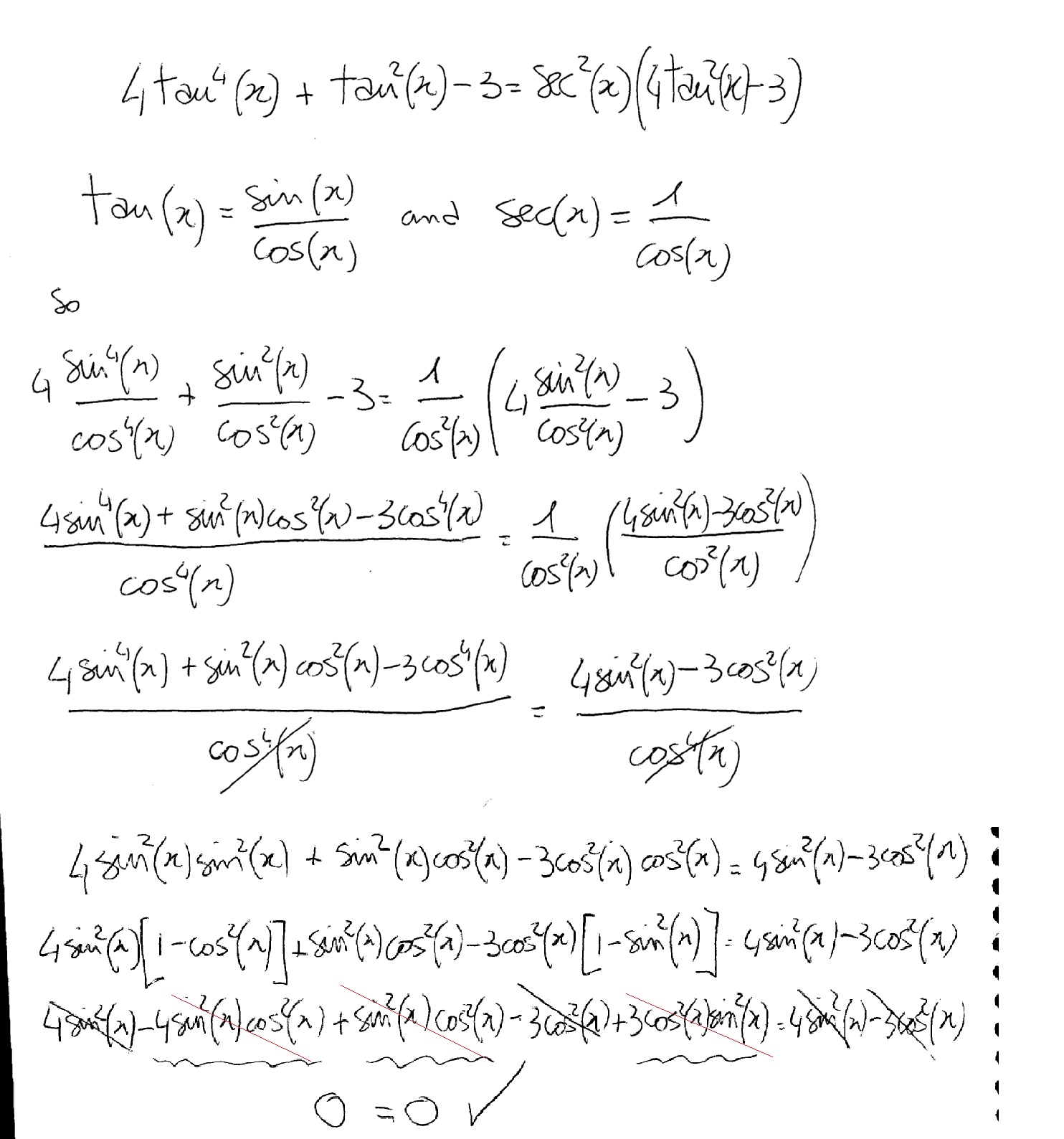


Tan2x ただの悪魔の画像



Ex 7 3 15 Integrate Tan3 2x Sec 2x Class 12 Ncert Ex 7 3
A follow up proof to accompany sin^2 cos^2 =1 Another identity that is used quite a bit, especially in calculus involving trigonometric functionsAbout Press Copyright Contact us Creators Advertise Developers Terms Privacy Policy & Safety How YouTube works Test new features Press Copyright Contact us CreatorsLegend x and y are independent variables, ;



Limit Trigonometric Function 2 Sec 2x 1 Tan X Youtube



Integration Of Tan 2x Page 2 Line 17qq Com
As there is no way to immediately integrate tan^2(x) using well known trigonometric integrals and derivatives, it seems like a good idea would be writing tan^2(x) as sec^2(x) 1 Now, we can recognise sec^2(x) as the derivative of tan(x) (you can prove this using the quotient rule and the identity sin^2(x) cos^2(x) = 1), while we get x when we integrate 1, so our final answer is tan(x)Free math problem solver answers your algebra, geometry, trigonometry, calculus, and statistics homework questions with stepbystep explanations, just like a math tutorDani Aug 13, 15 cos 2 x = 2 cos 2 x − 1 tan 2 x 1 = sec 2 x 1 cos 2 x = 2 cos 2 x = sec 2 x 2



Consider The Following Equations 1 Cosec 2x Sec 2x Cosec 2xsec 2x 2 Sec 2x Tan 2x Sec 2xtan 2x 3 Cosec 2x Tan 2x Cot 2x



Please Prove 4q 4 Prove That Tan2 Sec 1 2 Cot2 Cosec 1 3 11 Maths Inverse Trigonometric Functions Meritnation Com
17/03/08 · if your trying to simplify the equation the answer is 1 because sec^2= 1 tan^2 trig identity If you replace sec^2 with the 1 tan^2 and continue the03/01/17 · so tan^2(x) sec^2(x) = sec^2(x) 1 sec^2(x) = 1 0 0 Still have questions?Get your answers by asking now Ask Question 100 Join Yahoo Answers and get 100 points today Join Trending Questions Trending Questions round 475,695 to the nearest thousand?



Int Sec 2x Tan 2x 4 Dx Maths Questions



Sec 4x Sec 2x 3 Then What Is Value Of Tan 4x Tan 2x Brainly In
Prove sec^2(x)tan^2(x)=1 Let us prove the equation We know the identity sin 2 (x)cos 2 (x)=1 ——(i) Dividing throughout the equation by cos 2 (x) We get sin 2 (x)/cos 2 (x) cos 2 (x)/cos 2 (x) = 1/cos 2 (x) We know that sin 2 (x)/cos 2 (x)= tan 2 (x), and cos 2 (x)/cos 2 (x) = 1 So the equation (i) after substituting becomesIn mathematics, trigonometric substitution is the substitution of trigonometric functions for other expressions In calculus, trigonometric substitution is a technique for evaluating integralsMoreover, one may use the trigonometric identities to simplify certain integrals containing radical expressions Like other methods of integration by substitution, when evaluating a definite integral, itIdentifing the pattern is very important in mathematics here in this problem we first identify the pattern and rearrange the the expression before substitu



If Sec A 2x And Tan A 2 X Then Find The Value Of 2 X2 1 X2 Brainly In



Question Video Differentiating Functions Involving Trigonometric Ratios Using Pythagorean Identities Nagwa
Given `9 sec^2 tan^2 A` `=9 (sec^2 Atan^2 A)` We know that, `sec^2 Atan^2 A=1` Therefore, `9 sec^2 tan^2 A=9`03/04/18 · Explanation We have ∫ tan2(x) sec(x) dx We can rewrite this as ∫tan2(x) ⋅ (sec(x))−1dx Remember that tan2(x) = sec2(x) −1 ⇒ ∫(sec2(x) − 1) ⋅ (sec(x))−1dx ⇒ ∫sec(x) −(sec(x))−1dx ⇒ ∫sec(x)dx − ∫(sec(x))−1dxTan (x) = tan (x) cot (x) = cot (x) sin 2 (x) cos 2 (x) = 1 tan 2 (x) 1 = sec 2 (x) cot 2 (x) 1 = csc 2 (x) sin (x y) = sin x cos y cos x sin y cos (x y) = cos x cosy sin x sin y tan (x y) = (tan x tan y) / (1 tan x tan y) sin (2x) = 2 sin x cos x



Ex 7 3 15 Integrate Tan3 2x Sec 2x Class 12 Ncert Ex 7 3



Introduction To Trigonometry Ncert Solutions For Class 10 Maths Edusaint
D is the differential operator, int is the integration operator, C is the constant of integration Identities tan x = sin x/cos x equation 1 cot x = cos x/sin x equation 2 sec x = 1/cos x equation 3 csc x = 1/sin x equation 4In this video I go over the proof of the trigonometry identity tan^2(x) 1 = sec^2(x) The proof of this identity is very simple and like many other trig id09/12/ · Like sin 2 θ cos 2 θ = 1 and 1 tan 2 θ = sec 2 θ etc Such identities are identities in the sense that they hold for all value of the angles which satisfy the given condition among them and they are called conditional identities Trigonometric Identities With Examples



Berapakah Integral Dari Tan 2x Sec 2x Dx Brainly Co Id



Sec 6 Tan 6 1 3sec 2 Tan 2 Brainly In
12/06/08 · Well showing that tan^2(x)1=sec^2(x) is simple Since sin^2/cos^2=tan^2 and 1=cos^2/cos^2 you can write the left side of the equation as (sin^2cos^2)/cos^2 This in turn gives you 1/cos^2=sec^2I am leaving out the x's so it is easier to typeFree math problem solver answers your algebra, geometry, trigonometry, calculus, and statistics homework questions with stepbystep explanations, just like a math tutorTan (x) = tan (x) cot (x) = cot (x) sin ^2 (x) cos ^2 (x) = 1 tan ^2 (x) 1 = sec ^2 (x) cot ^2 (x) 1 = csc ^2 (x) sin (x y) = sin x cos y cos x sin y cos (x y) = cos x cosy sin x sin y tan (x y) = (tan x tan y) / (1 tan x tan y) sin (2x) = 2 sin x cos x



Solve A Trigonometric Equations With Secant And Tangent Youtube



Integral 1 Tan 2 X Sec 2 X Youtube
Welcome to Sarthaks eConnect A unique platform where students can interact with teachers/experts/students to get solutions to their queries Students (upto class 102) preparing for All Government Exams, CBSE Board Exam, ICSE Board Exam, State Board Exam, JEE (MainsAdvance) and NEET can ask questions from any subject and get quick answers byFree trigonometric equation calculator solve trigonometric equations stepbystepFree math problem solver answers your algebra, geometry, trigonometry, calculus, and statistics homework questions with stepbystep explanations, just like a math tutor



Solved 1 Tan2 Theta Sec2 Theta Verify That The Equati Chegg Com
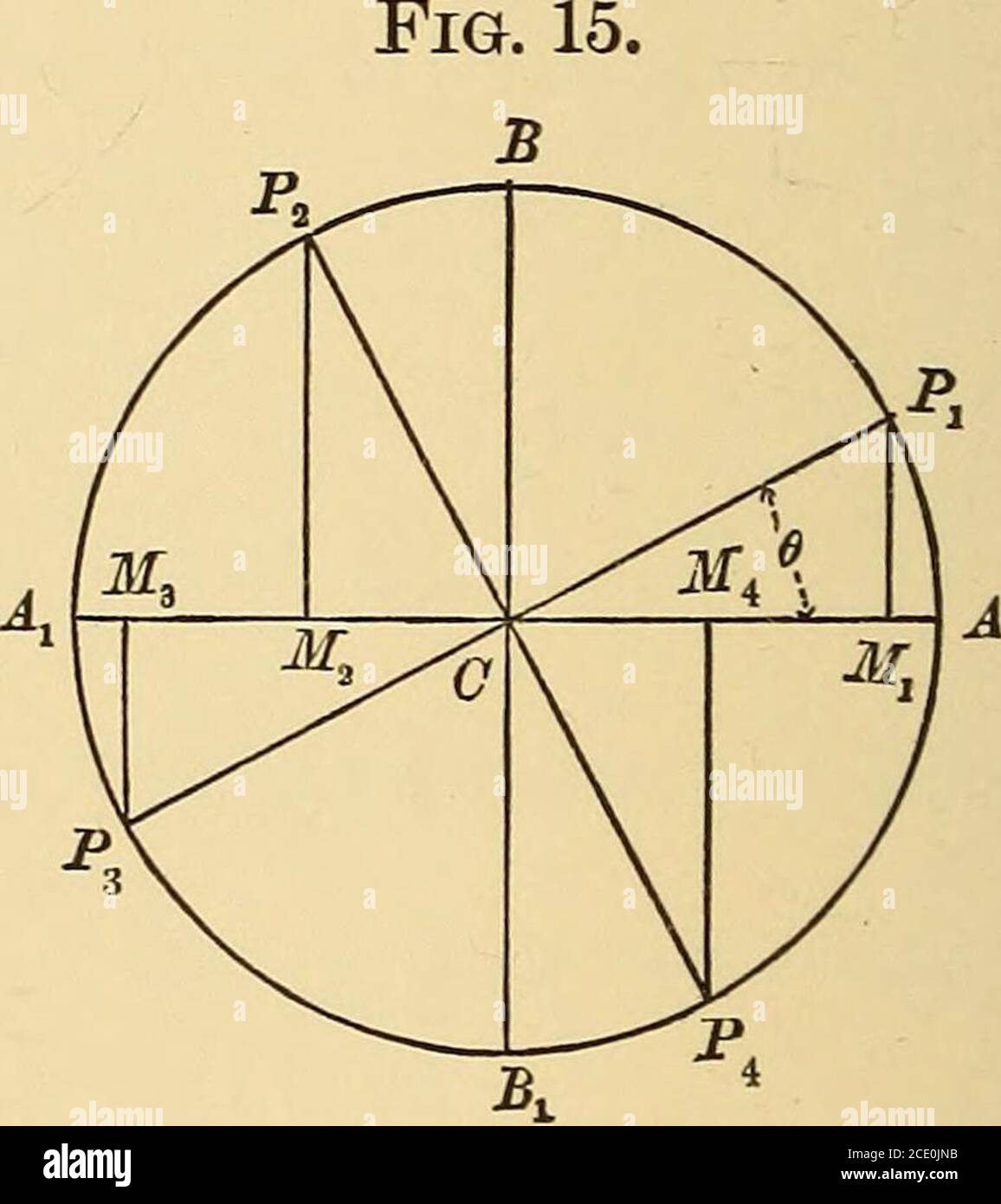


Elements Of Plane And Spherical Trigonometry Tan A 1 Sin2 D Tan 0 2 Sec A Cos 0 Cot 3 Cot2 X Tan2 A 4 Sin Y Cos
(sin \phi)^2 is equal to sin^2\phi sin^260 cos^260 tan^245 sec^260 cosec^260 The trick to that is to use a few trigonometric identities \sin^2\theta \cos^2\theta = 1 \tan 45 = 1Tan 4 θ tan 2 θ = sec 4 θ – sec 2 θ LHS = tan 4 θ tan 2 θ = tan 2 θ (tan 2 θ 1) = tan 2 θ sec 2 θ RHS = sec 4 θ – sec 2 θ = sec 2 θ (sec17/04/ · We have 1tan 2 = sec 2 1 tan 2 = (13/12) 2 tan 2 = (13/12) 21 = (169/144)1 = ()/144 = 25/144 Taking square root on both sides tan = 5/12 cot = 1/tan = 12/5 sin/cos = tan sin = tan×cos sin = (5/12)×(12/13) sin = 5/13 cosec = 1/sin = 13/5 Hence cos = 12/13 , tan = 5/12, cot = 12/5 , sin = 5/13 and cosec = 13/5 5 Prove the following



Introduction To Trigonometry Ncert Solutions For Class 10 Maths Edusaint
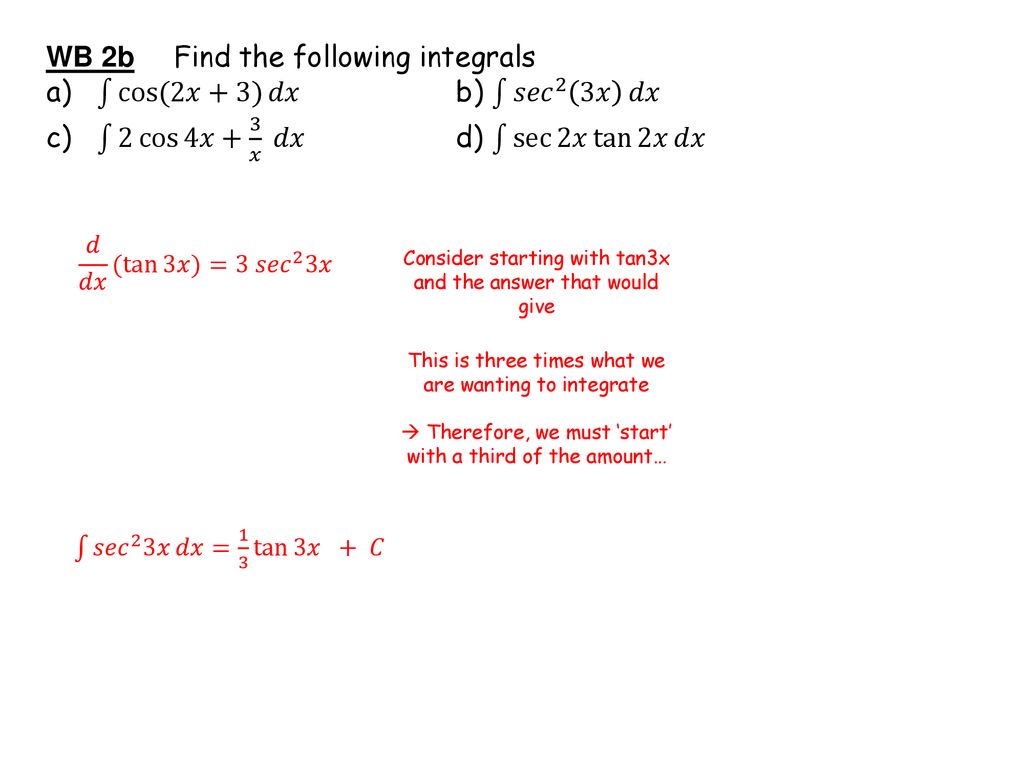


Integration Trig Identities Ppt Download
Click here👆to get an answer to your question ️ Find the value of 9sec^2A 9tan^2ALHS = (1 tanA tanB) 2 (tanA tanB) 2 = 1 tan 2 A tan 2 B 2tanA tanBtan 2 A tan 2 B 2 tanA tanB = 1 tan 2 A tan 2 B tan 2 A tan 2 B = sec 2 A tan18/08/01 · The six trigonometric functions can be defined as coordinate values of points on the Euclidean plane that are related to the unit circle, which is the circle of radius one centered at the origin O of this coordinate system While rightangled triangle definitions allows for the definition of the trigonometric functions for angles between 0 and radian (90°), the unit circle definitions



Find The Indefinite Integral Using The Substitution X 2 Sec 𝜃 Use C For The Constant Of Integration X 3 X 2 4 Dx Wyzant Ask An Expert



Ex 3 4 8 Find General Solution Of Sec 2 2x 1 Tan 2x Teachoo
Thus $(1\tan^2\theta)\sec^2\theta$ is a constant Since it is $0$ at $\theta=0$, it is zero everywhere Share Cite Follow answered Dec 15 '13 at 314 dfeuer dfeuer 8,447 3 3 gold badges 29 29 silver badges 59 59 bronze badges $\endgroup$ Add a comment Your Answer= (sec 2 θ 1)(sec 2 θ) 1 tan 2 θ = sec 2 θ = sec 4 θ sec 2Solve your math problems using our free math solver with stepbystep solutions Our math solver supports basic math, prealgebra, algebra, trigonometry, calculus and more



Evaluate Int Sec 2xtanx Sec 2x Tan 2x Dx



Answered O 1 Sec 2 2sec Z 40se X 2 Bartleby
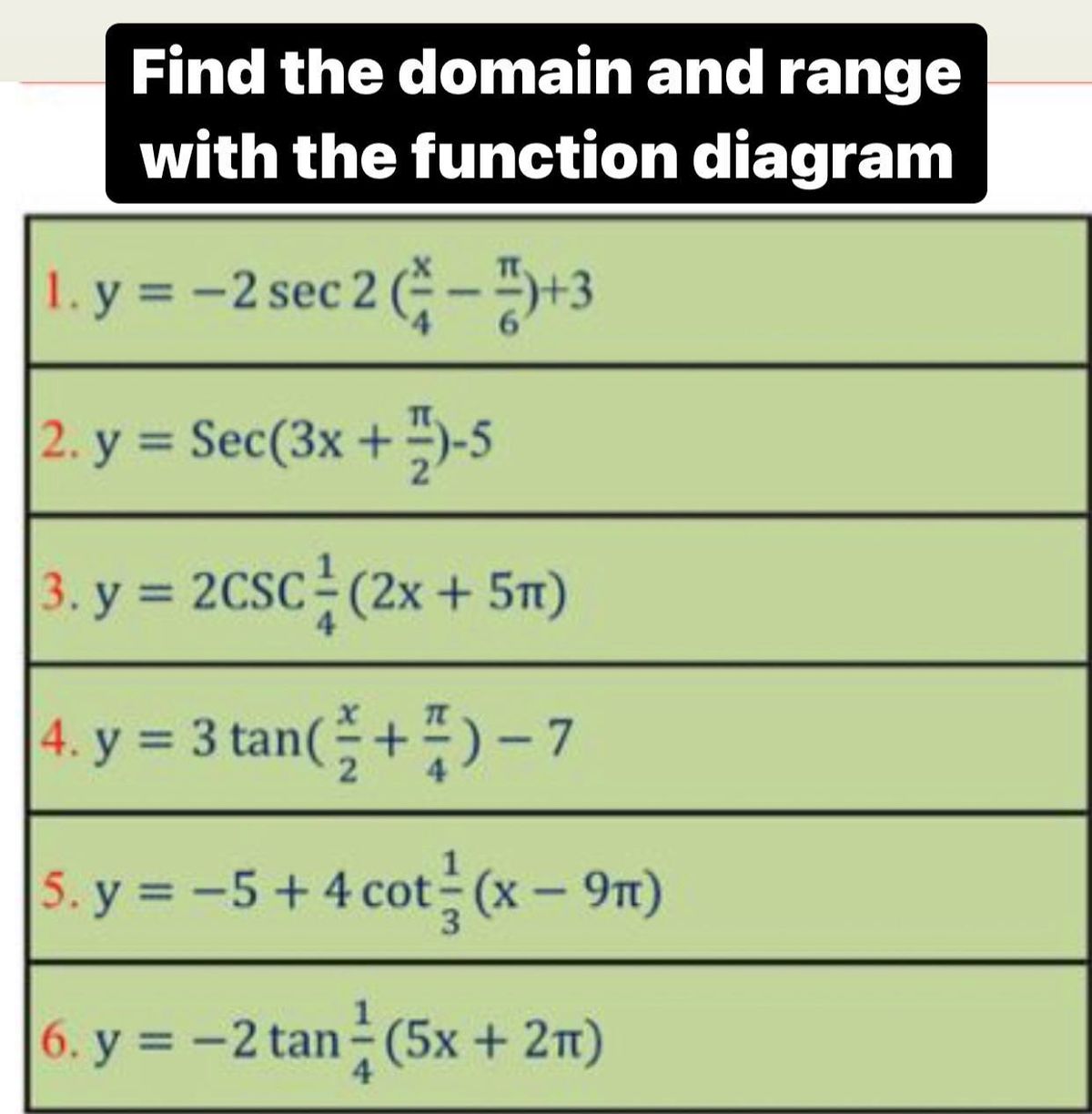


Answered Y 2 Sec 2 3 Bartleby



Express Sec 2theta Cosec 2theta In The Terms Of Tan Theta And Cot Theta The Answer Is Tantheta Cottheta M Then M
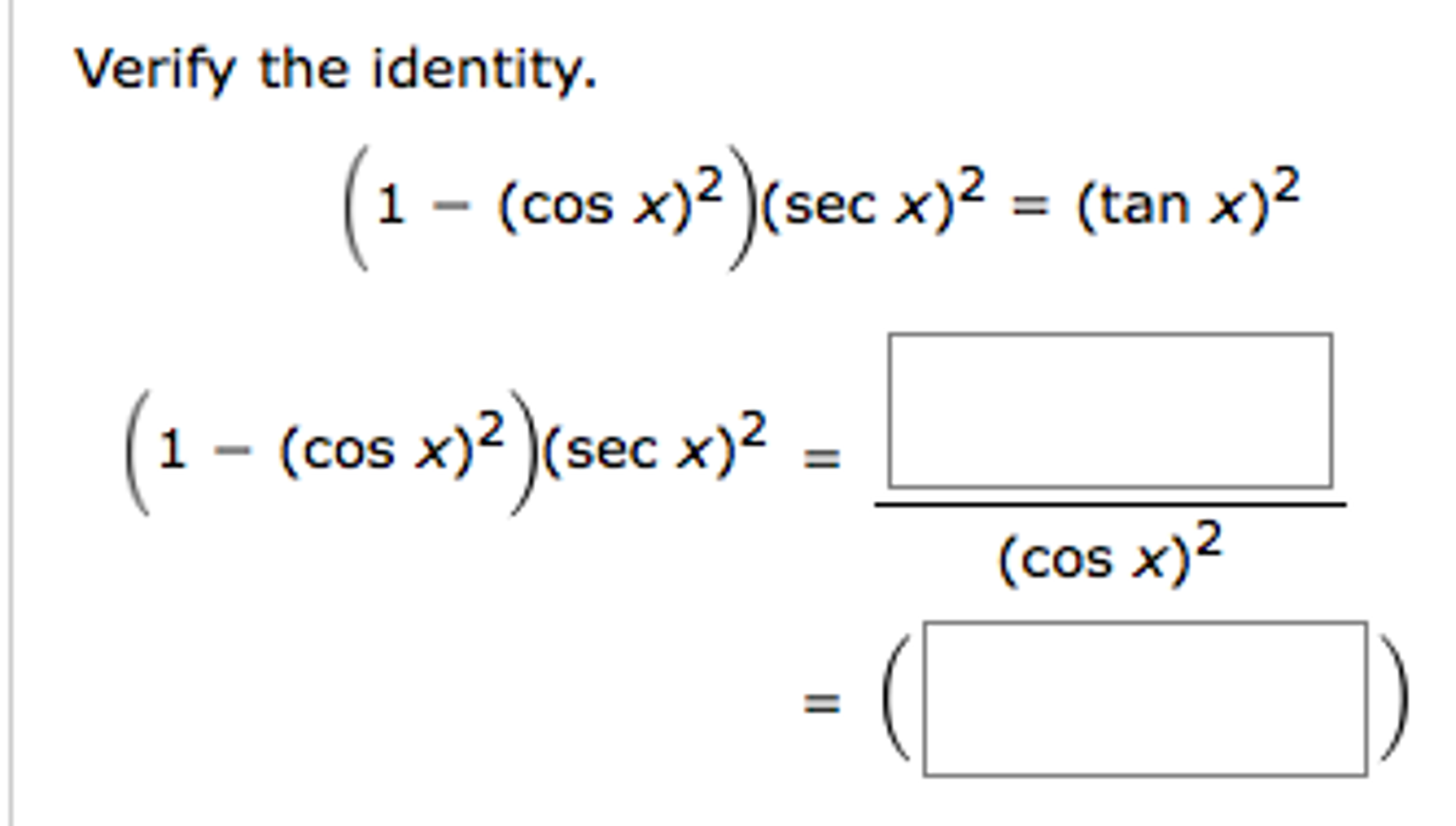


Solved Verify The Identity 1 Cos X 2 Sec X 2 Chegg Com
.JPG)


Every Day I M Calculatin I D3 Unit Q Pythagorean Identities



Sec 2 Theta Tan 2 Theta Maths Trigonometry Meritnation Com



Sample Problems Cos 2 X Tan2 X Tan 2 Csc 2 Tan Sec X Tan X Cos X Sin 4 X Cos 4 X 1 2 Cos 2 X Pdf Free Download
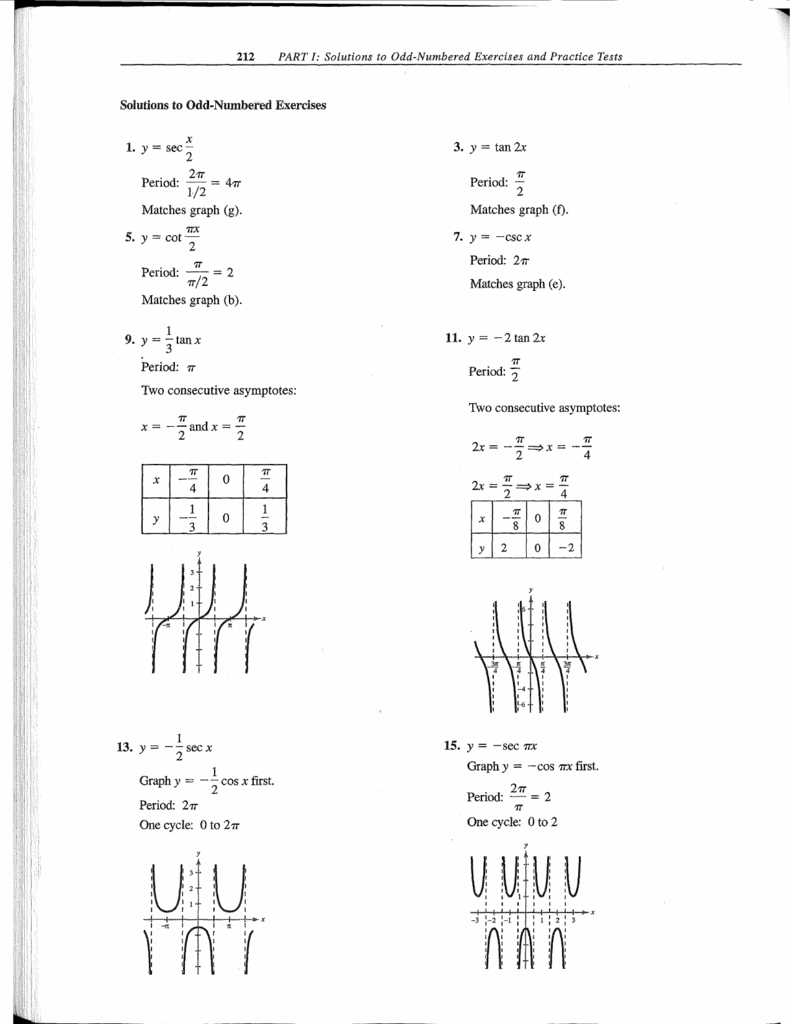


Solutions To Odd Number Exercises Lo Y Sec 2 Period



The Derivative Of H X 2 Sec 2 X Tan X Product Rule Example Youtube



Solved Verify The Following Identity Tan 2 X Cot 2 X Chegg Com



The Derivative Of Sec 2x Derivativeit
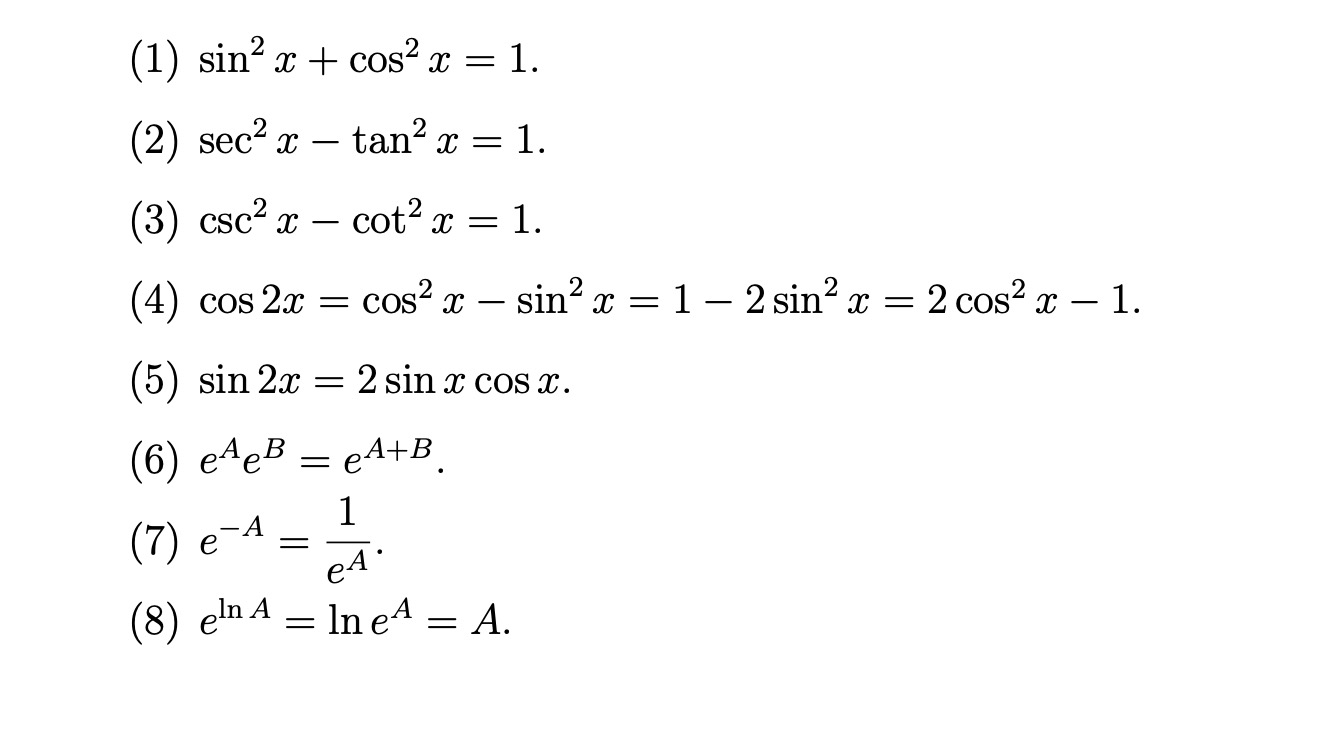


Here Is A List Of Identities Involving Trigonometr Chegg Com



Integral Of Tan 2x Cot 2x 2 Calculus 1 Trig Integrals Calculus Mathematics Email Subject Lines



Sec 2 Antiderivative Page 1 Line 17qq Com



Sec 6x Tan 6x 1 2 Tan 2x Sec 2x Important Difficult Trigonometric Identity Youtube



Integral Of Sec 2 X Sqrt 1 Tan 2 X Using The Arcsine Function Math Videos Maths Exam Calculus



N4qsaf7wqjhqdm



Sec 2 Theta 1 Tan 2 Theta Youtube
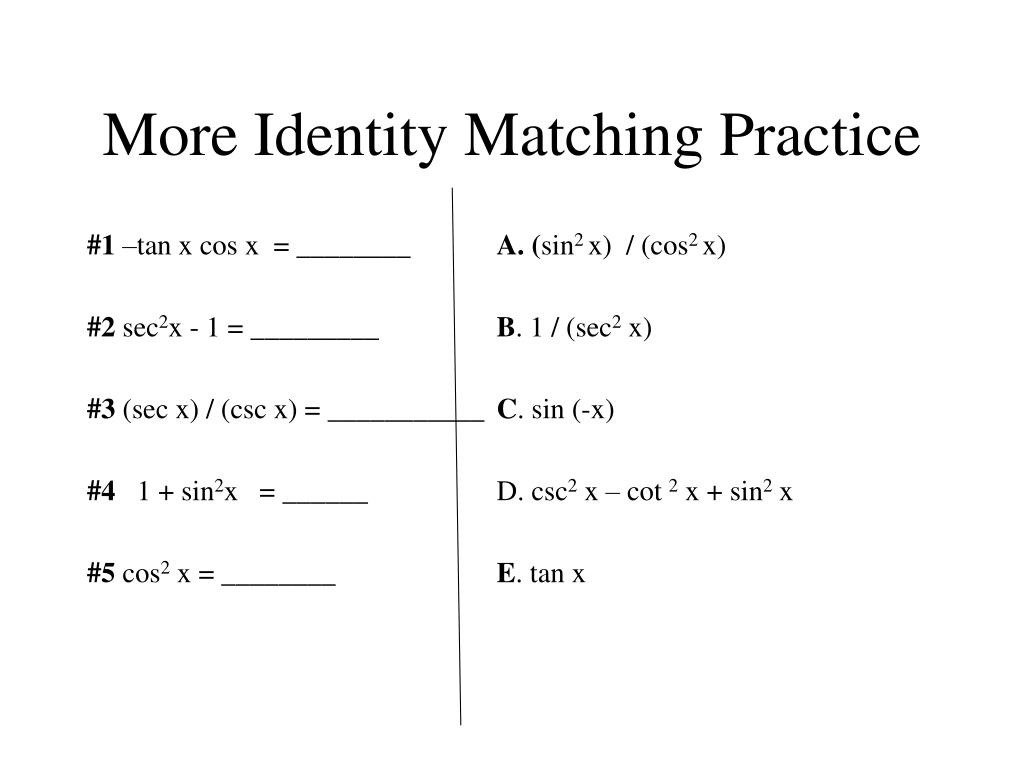


Ppt 5 1 Fundamental Trig Identities Powerpoint Presentation Free Download Id



The Value Of Tan 2 Sec 1 3 Cot 2 Cosec 1 4 Is A 9 B



Maths Pages 51 100 Flip Pdf Download Fliphtml5



Ml Aggarwal Solutions For Class 10 Maths Chapter 18 Trigonometric Identities Download Pdf



5 1 5 2 Trigonometric Identities Ppt Download



Prove The Following Identities 1 Tanatanb 2 Tan A Tan B 2



The Value Of Tan 2 Sec 1 3 Cot 2 Cosec 1 4 Is Youtube



If Sec 2x Tanx Tan 2x Tan 2x Sec 2x Tanx Tanx Tan
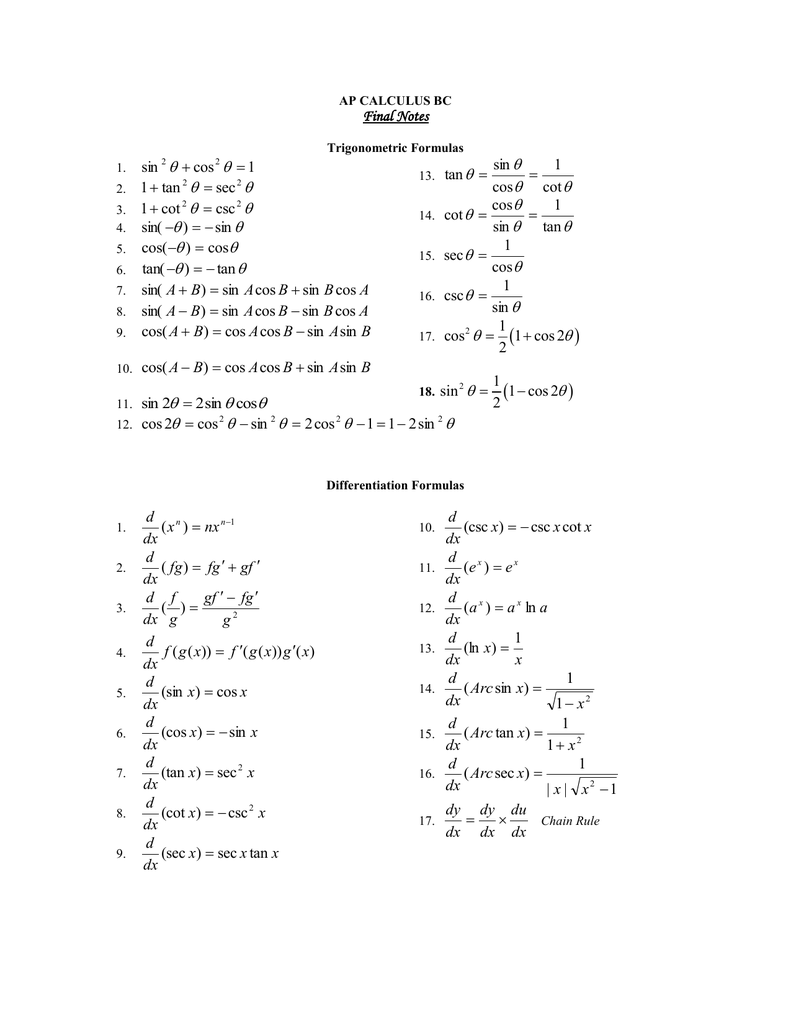


Calculus Cheat Sheet



Ex 7 4 9 Integrate Sec 2 X Root Tan 2 X 4 Ncert Class 12



Lesson 5 2 Verifying Trigonometric Identities Ppt Download



Tan4a Tan2a 1 Tan 2 3a Tan 2 A 2 Tan3a Sec 2 A Prove L H S R H S Askiitians



Ex 7 4 9 Integrate Sec 2 X Root Tan 2 X 4 Ncert Class 12
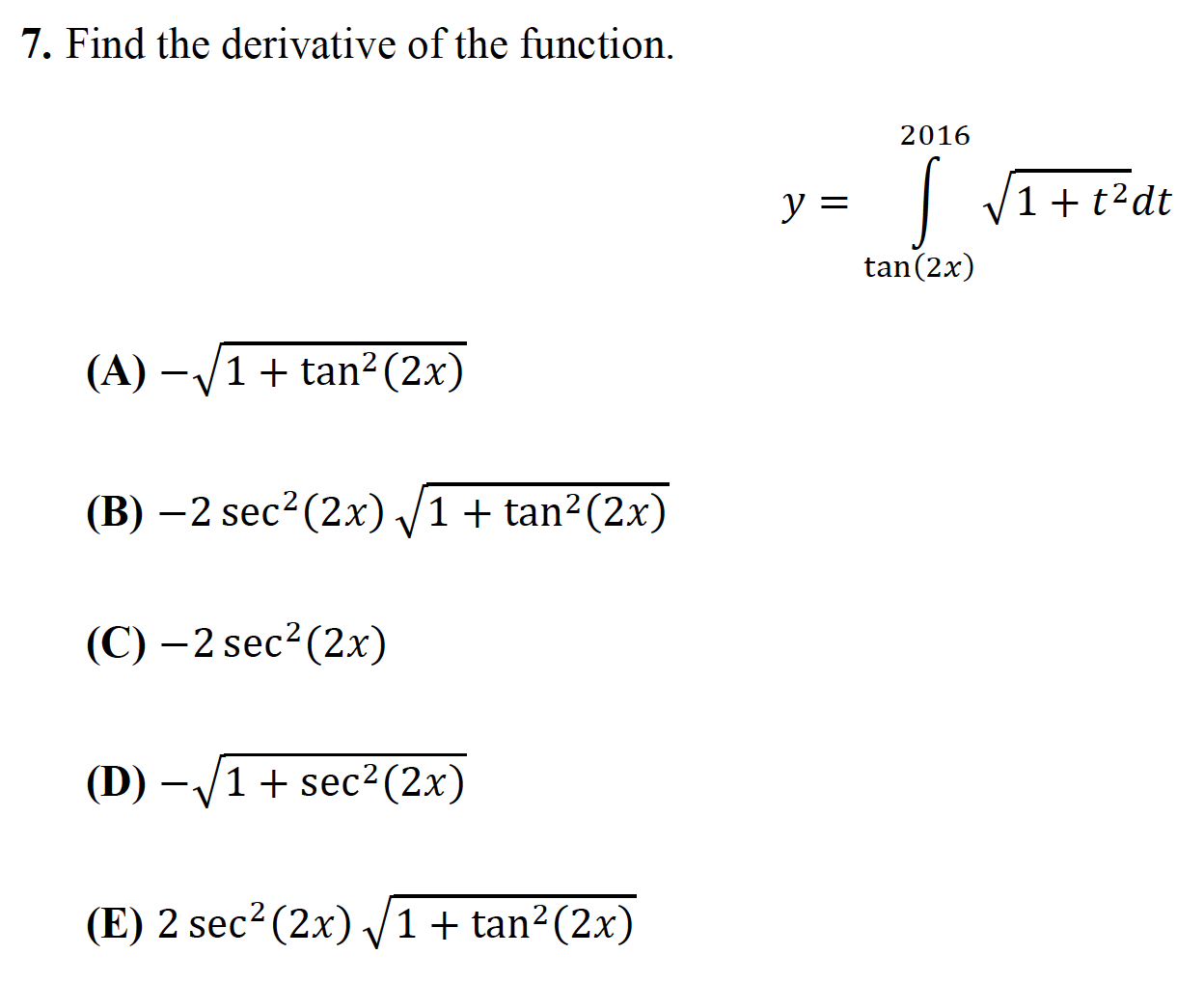


Solved 7 Find The Derivative Of The Function 16 Y 1 Chegg Com



2 Tan 2 30 Sec 2 52 Sin 2 38 Cosec 2 70 Tan 2 A 2 B 1 2 C 2 3 D 3 2 Brainly In



Ex 3 4 8 Find General Solution Of Sec 2 2x 1 Tan 2x Teachoo
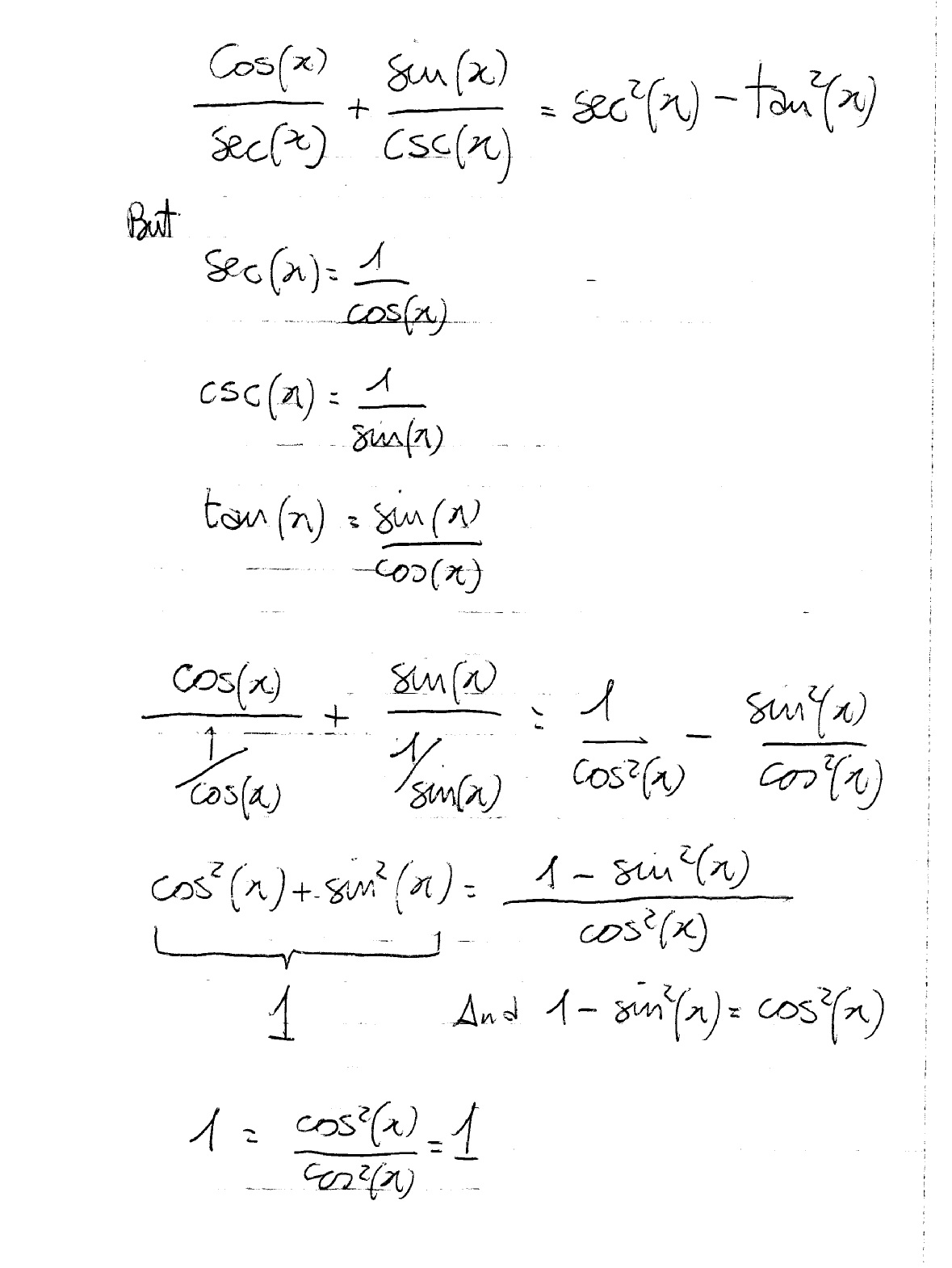


How Do You Prove The Identities Cosx Secx Sinx Cscx Sec 2x Tan 2x Socratic



1 Sec 2 Theta Sqrt Sec 2 Theta 1 A 2 Sec Thetab Sec 2 T
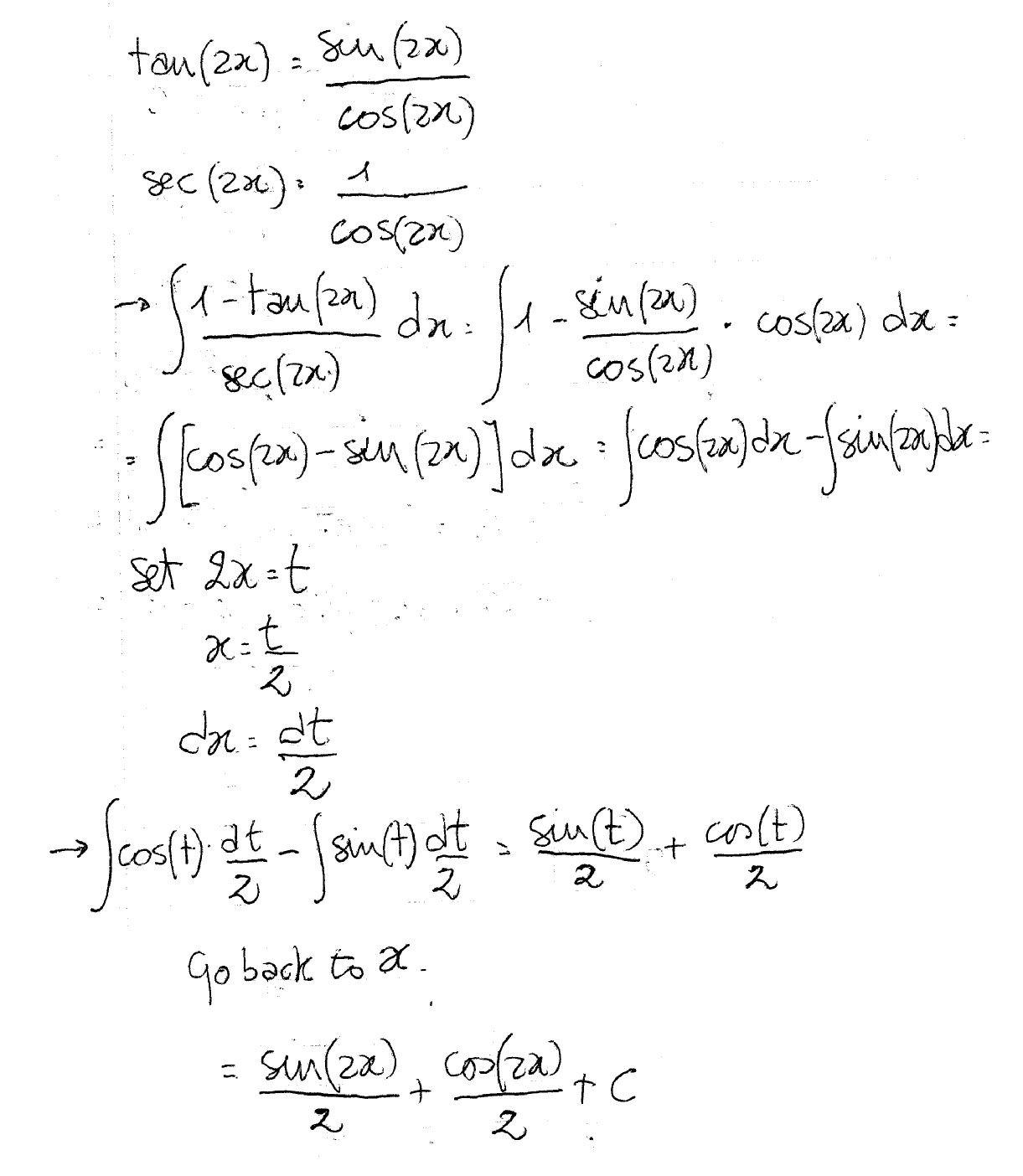


How Do You Integrate 1 Tan2x Sec2x Dx Socratic



Slides Show
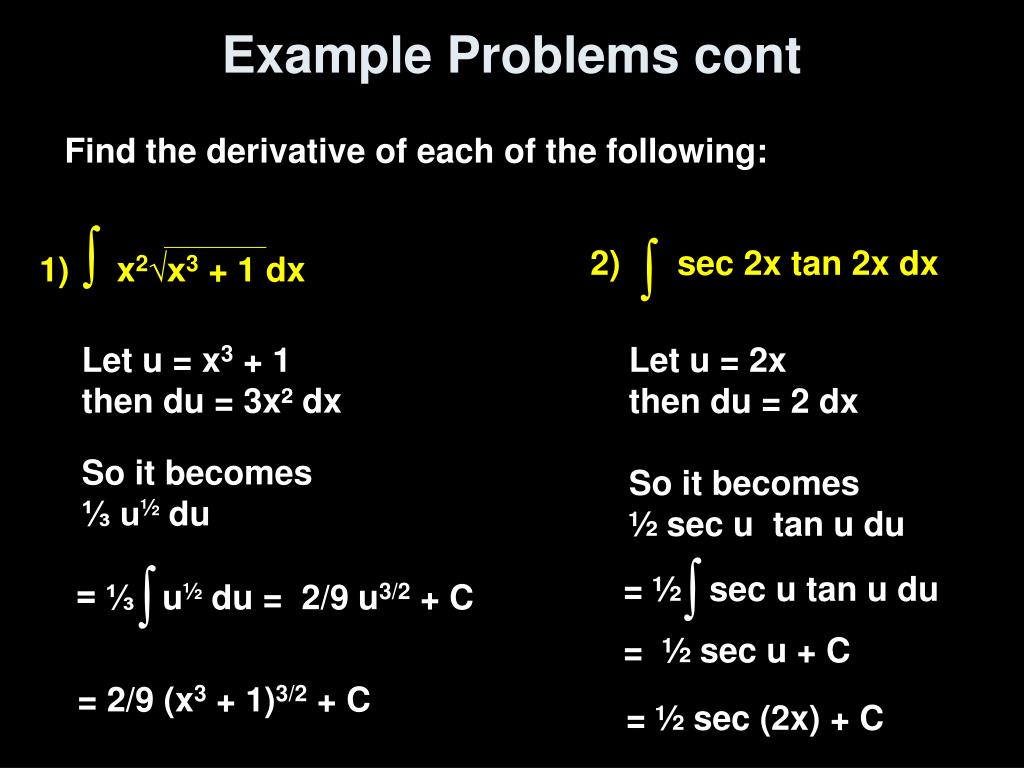


Ppt Lesson 5 5a Powerpoint Presentation Free Download Id



Sec 2x 3 Tan 2x 3 क सम कलन क ज य Youtube



Evaluate Sin 2 45 3 4 Cosec 2 30 Cos 60 Tan 60 Sin 30 Cos 60 1 2 Sec 45 Maths Introduction To Trigonometry Meritnation Com


How To Integrate Tan 4 X Sec 2 X X Quora



Integral Of Sec 2 X Page 1 Line 17qq Com


Algebra 2 Simple Trigonometry Identity Simplifications And Proofs I Have Attempted 11 16 And Simply Cannot Understand How They Are Getting Those Answers If Someone Could Explain One Of Them Maybe I Will
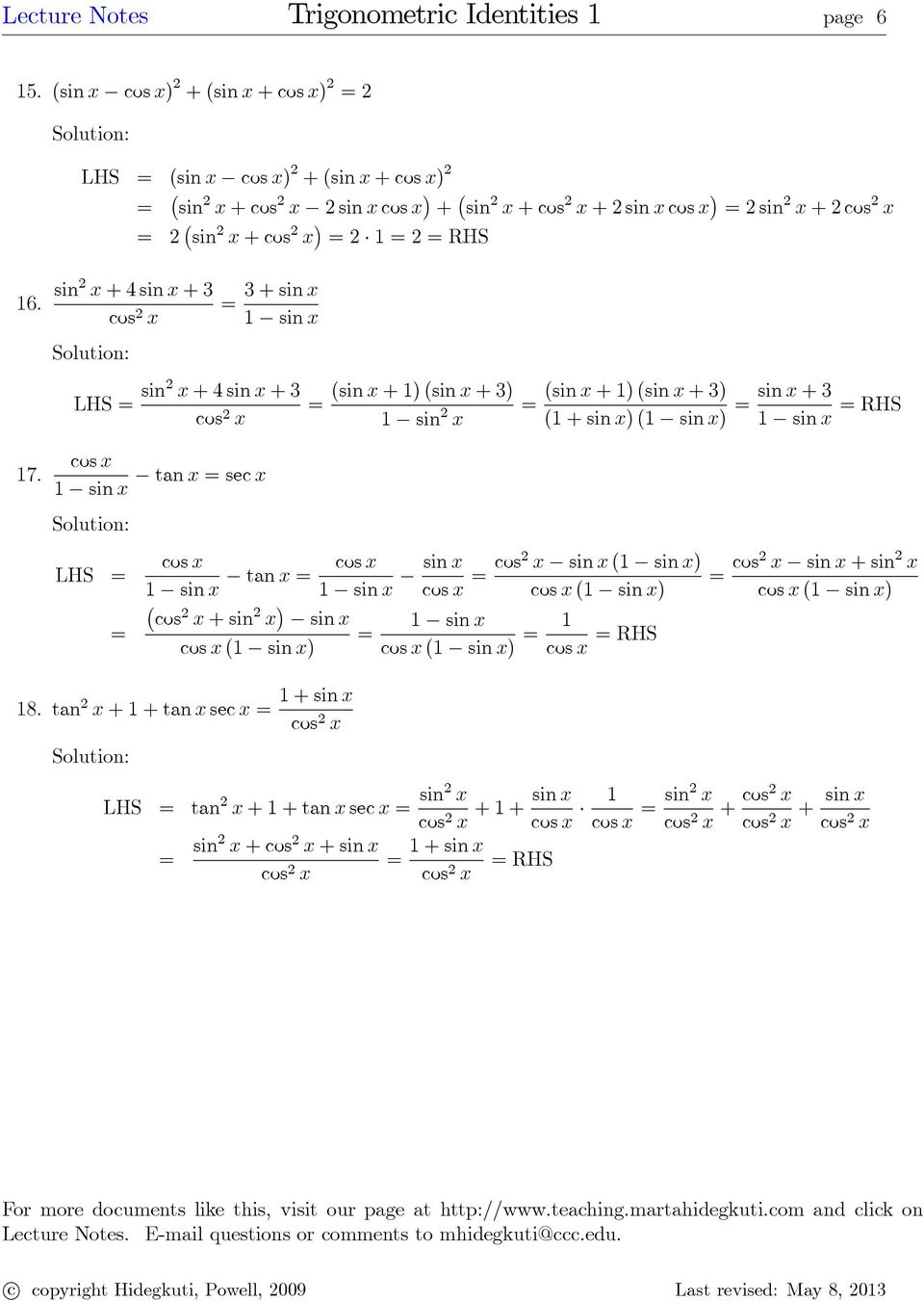


Sample Problems Cos 2 X Tan2 X Tan 2 Csc 2 Tan Sec X Tan X Cos X Sin 4 X Cos 4 X 1 2 Cos 2 X Pdf Free Download



Int Operatorname Tan X Alpha Tan X Alpha Tan 2 X D X N1 Log Left Frac Sqrt Sec 2



Solved 1 Cotx 1 Sin 2x 6 Cotx 1 Cos 2x 7 2 Cot 4x Cot Chegg Com



Int Sec 2x 16 Tan 2x Dx
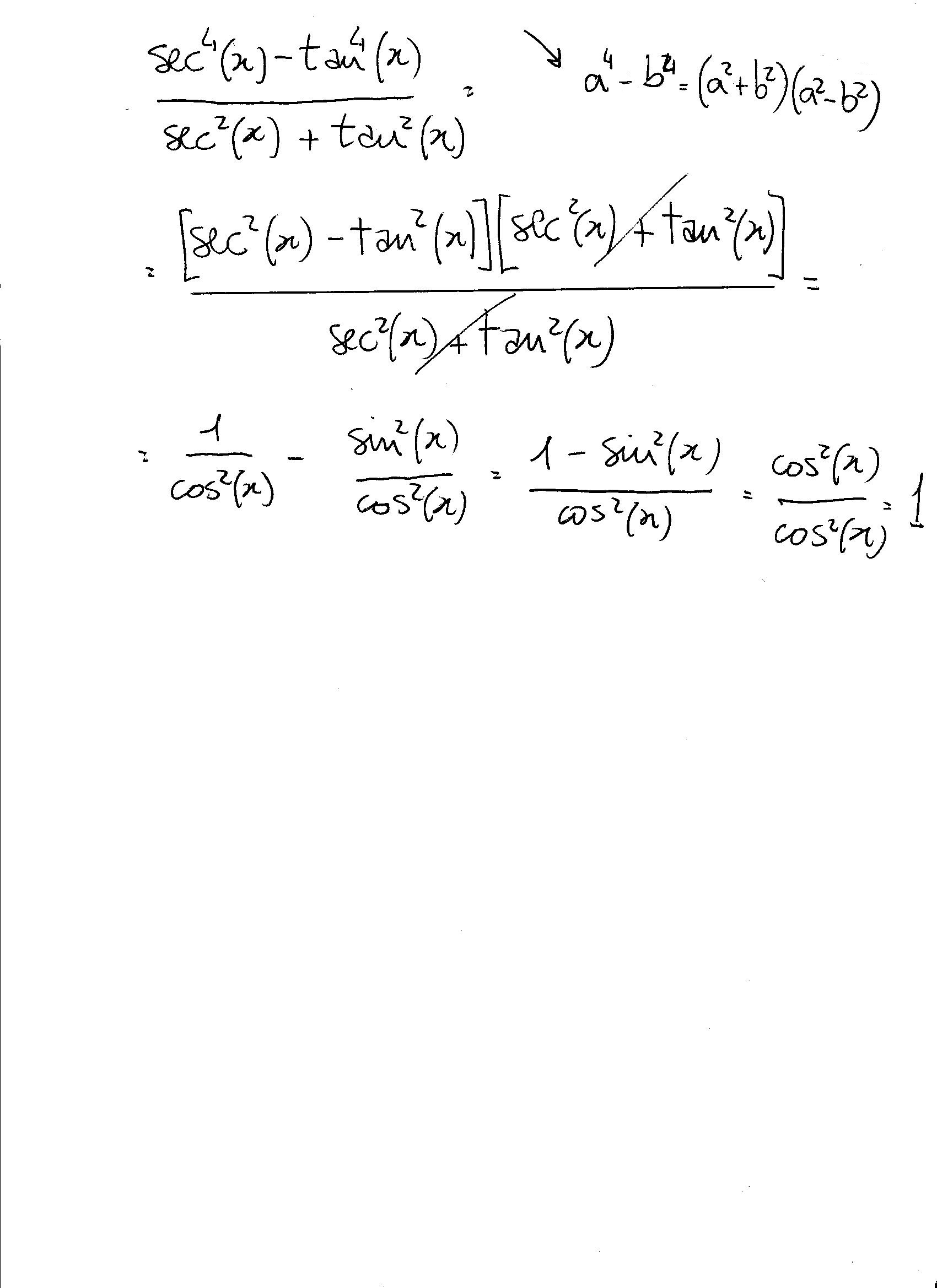


How Do You Simplify Sec 4x Tan 4x Sec 2x Tan 2x Socratic



If 3sec 4theta 8 10 Sec 2theta Find The Values Of Tantheta



Question Video Simplifying Trigonometric Expressions Using Pythagorean Identities Nagwa



Which Of These Parameterize The Parabola Y 2 X Sin 2t Sin T Cos 2t Cos T Sec 2t Sec T Tan 2t Tan T Mathematics Stack Exchange



4 8 16 Lesson 8 1 Day 3 Verify Trig Identities Ppt Download



Integration Trig Identities Ppt Download



Integration Of Tan 2 X Sec 2 X Youtube



Tan 1 General Chat
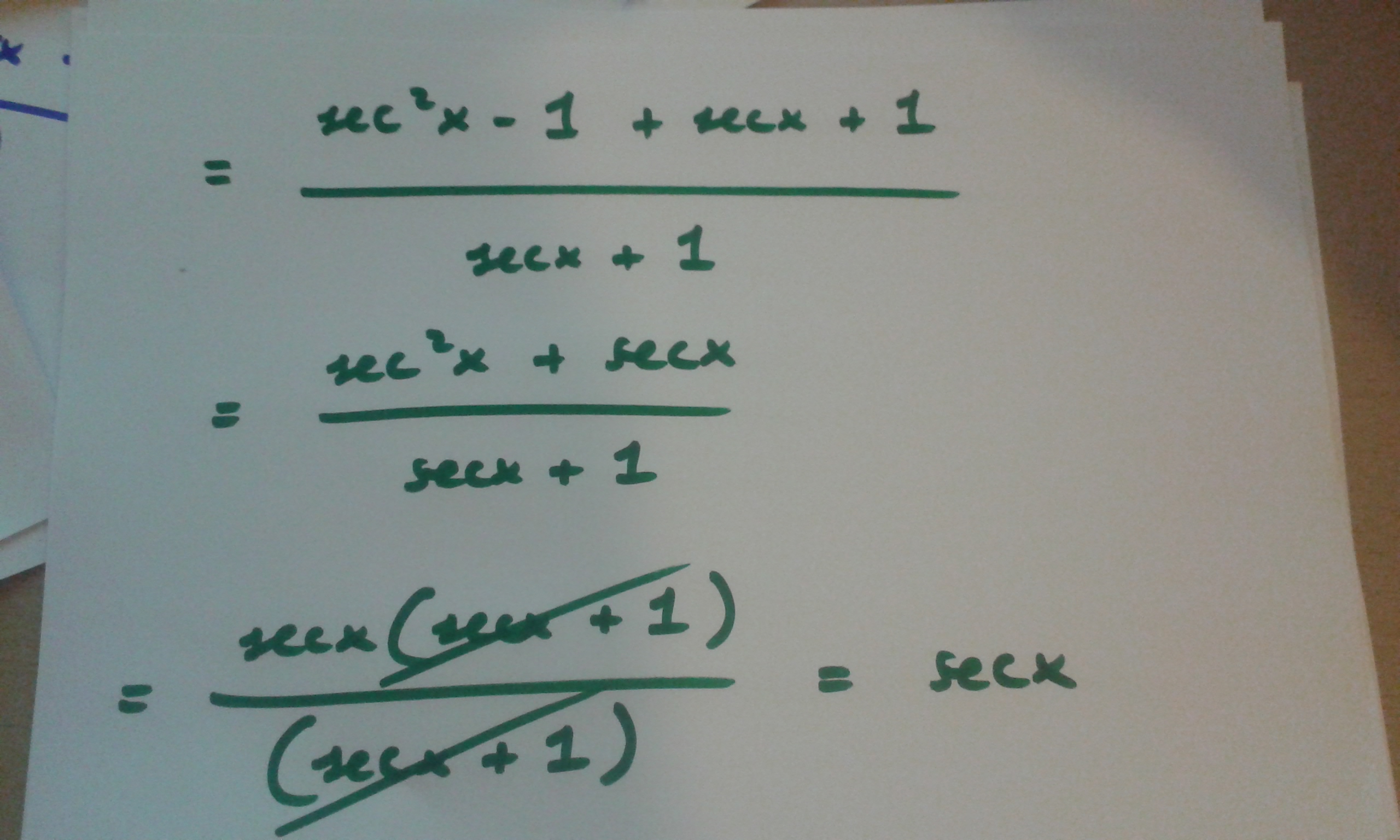


How Do You Prove Tan 2x Secx 1 1 Secx Socratic



Sample Problems Cos 2 X Tan2 X Tan 2 Csc 2 Tan Sec X Tan X Cos X Sin 4 X Cos 4 X 1 2 Cos 2 X Pdf Free Download



Rd Sharma Solutions For Class 10 Chapter 6 Trigonometric Identities Exercise 6 1 Get Pdf



Ex 3 4 8 Find General Solution Of Sec 2 2x 1 Tan 2x Teachoo
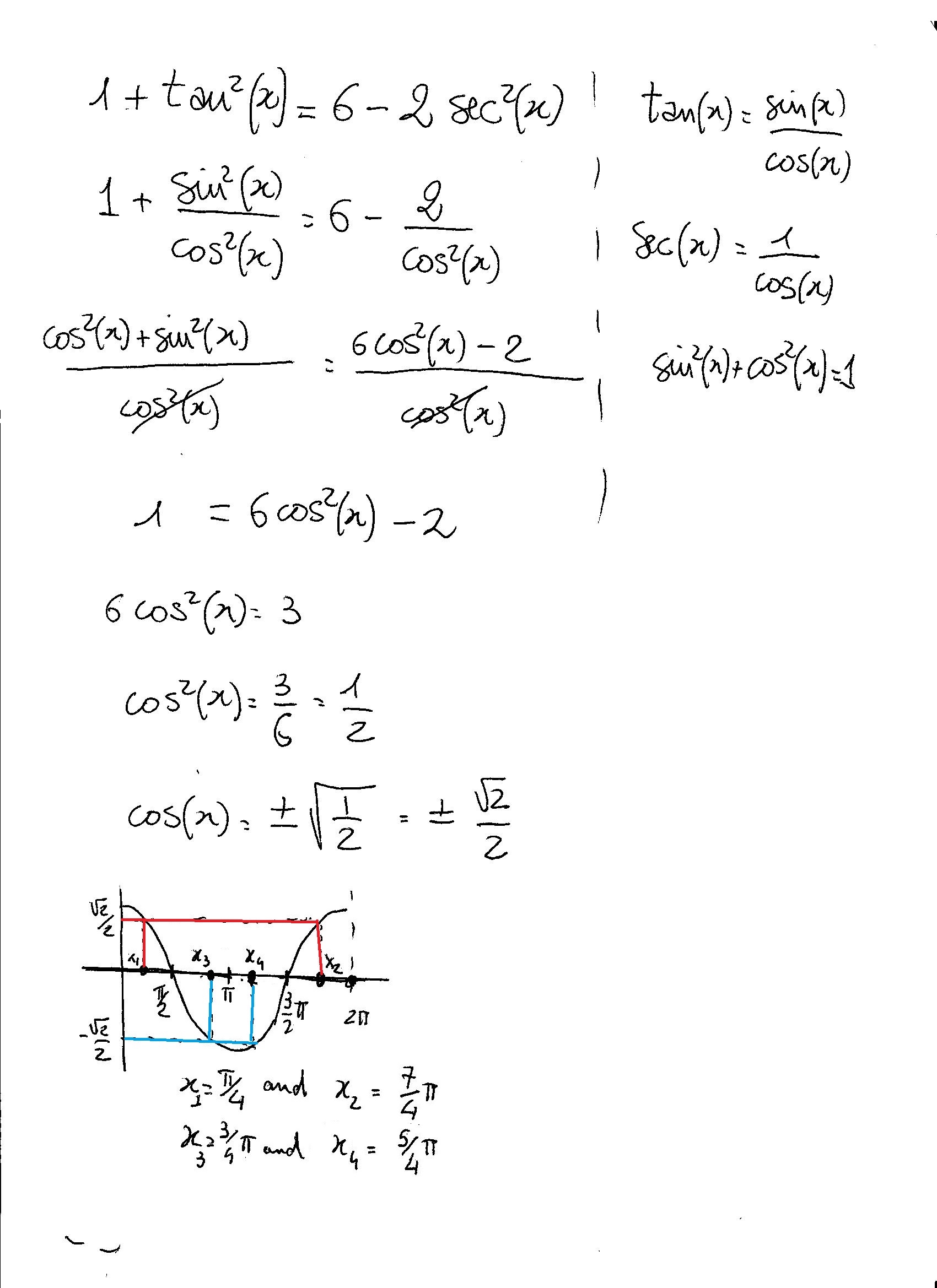


How Do You Solve 1 Tan 2x 6 2sec 2x Socratic
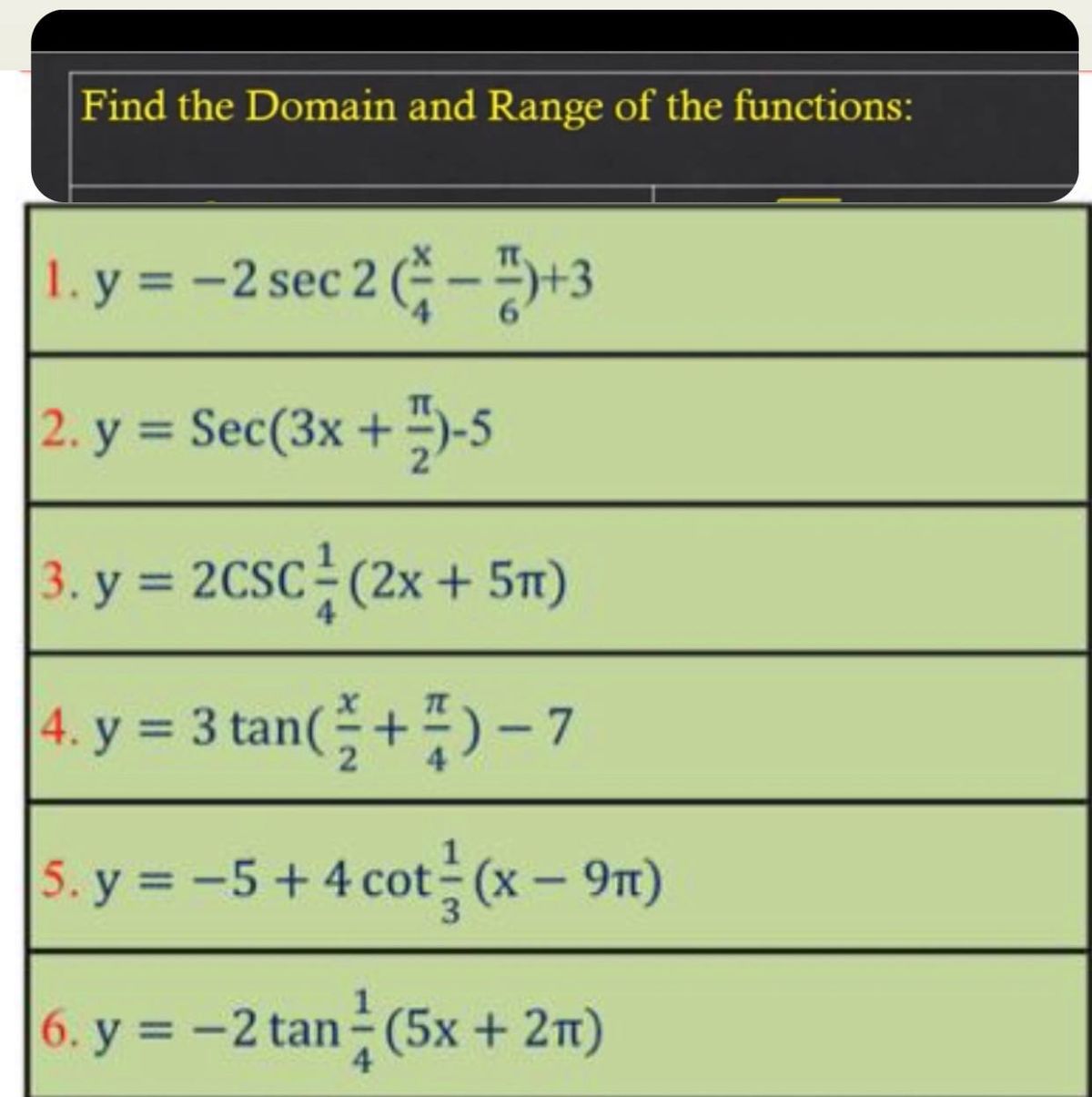


Answered Find The Domain And Range Of The Bartleby



X9hjzcloeakg9m


Solved Prove The Following Trig Identity Sec 2 X 2secx Cosx Cos 2 X Tan 2 X Sin 2 X Course Hero



Int 4sec 2xtanx Sec 2x Tan 2x Dx Log 1 F X C



Integral Tan 2 X Sec 4 X Youtube



Tanx Cotx 2 Sec 2x Cosec 2x Brainly In



Derive 1 Tan 2x Sec 2x And 1 Cot 2x Text Cosec 2x Geometrically Mathematics Stack Exchange
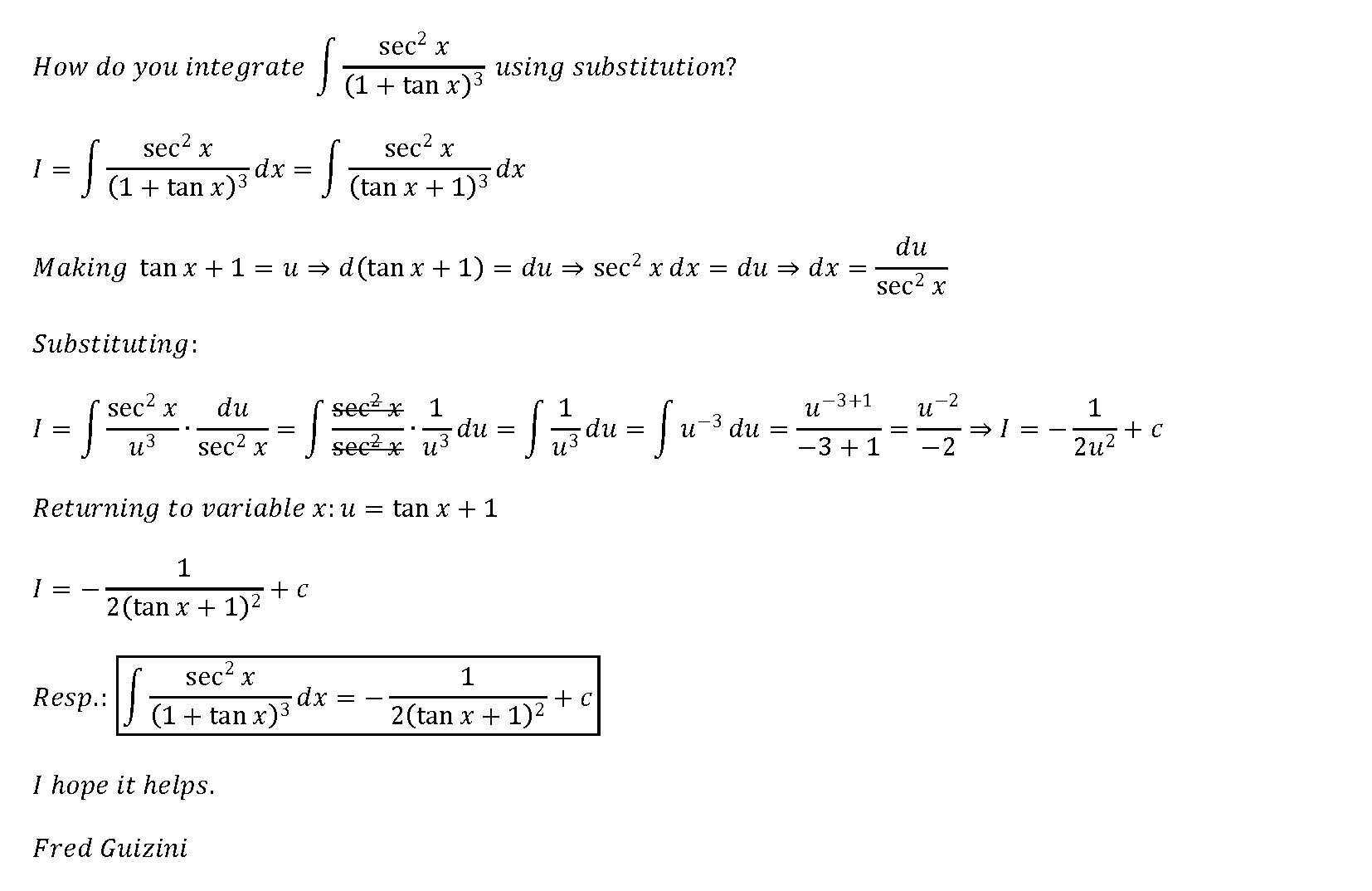


How Do You Integrate Int Sec 2x 1 Tanx 3 Using Substitution Socratic



No comments:
Post a Comment